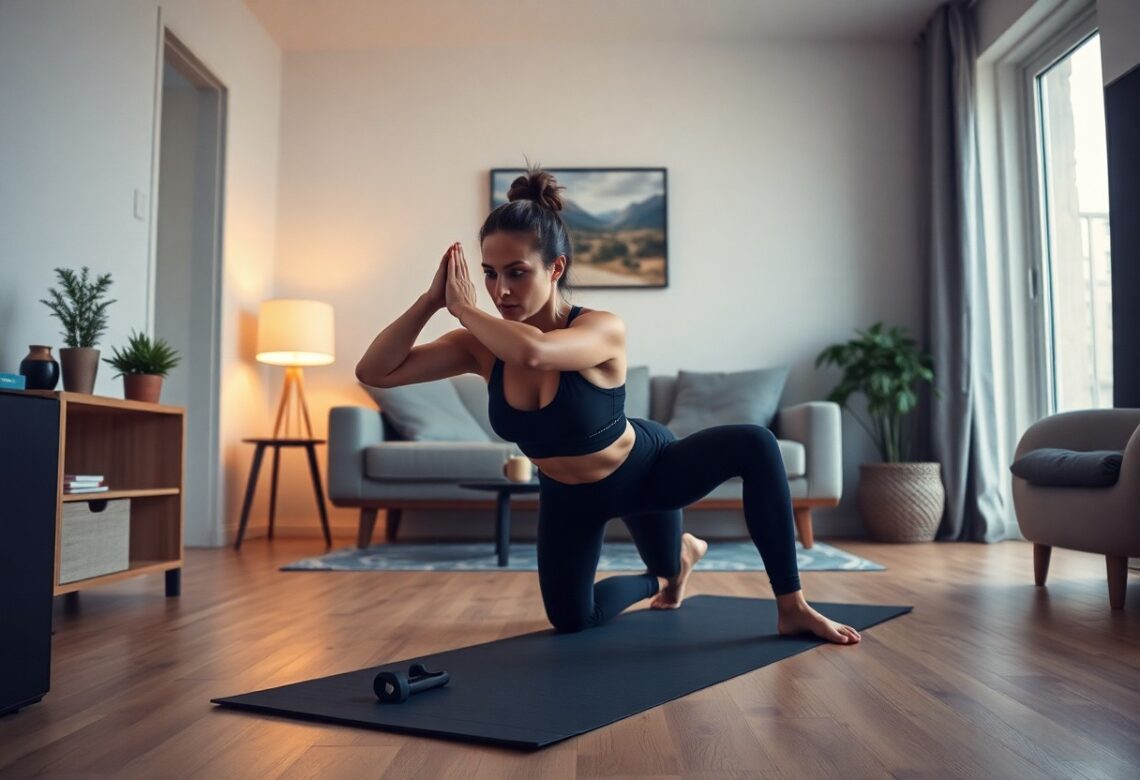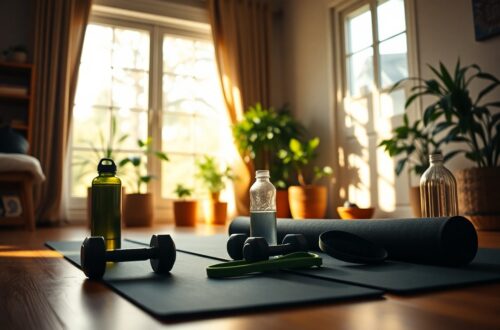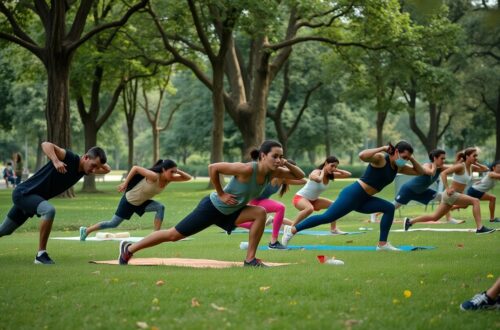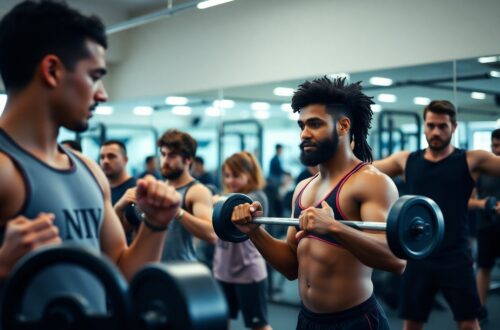You can stay fit and active, even in the smallest of spaces, without any fancy equipment. In this blog post, you will discover a variety of effective exercises that are perfect for your apartment or any compact area. These workouts are designed to help you build strength, improve flexibility, and boost your overall health. By focusing on bodyweight movements, you can create a solid fitness routine that fits your lifestyle and environment. Let’s investigate the best no-equipment exercises that will keep you moving and motivated!
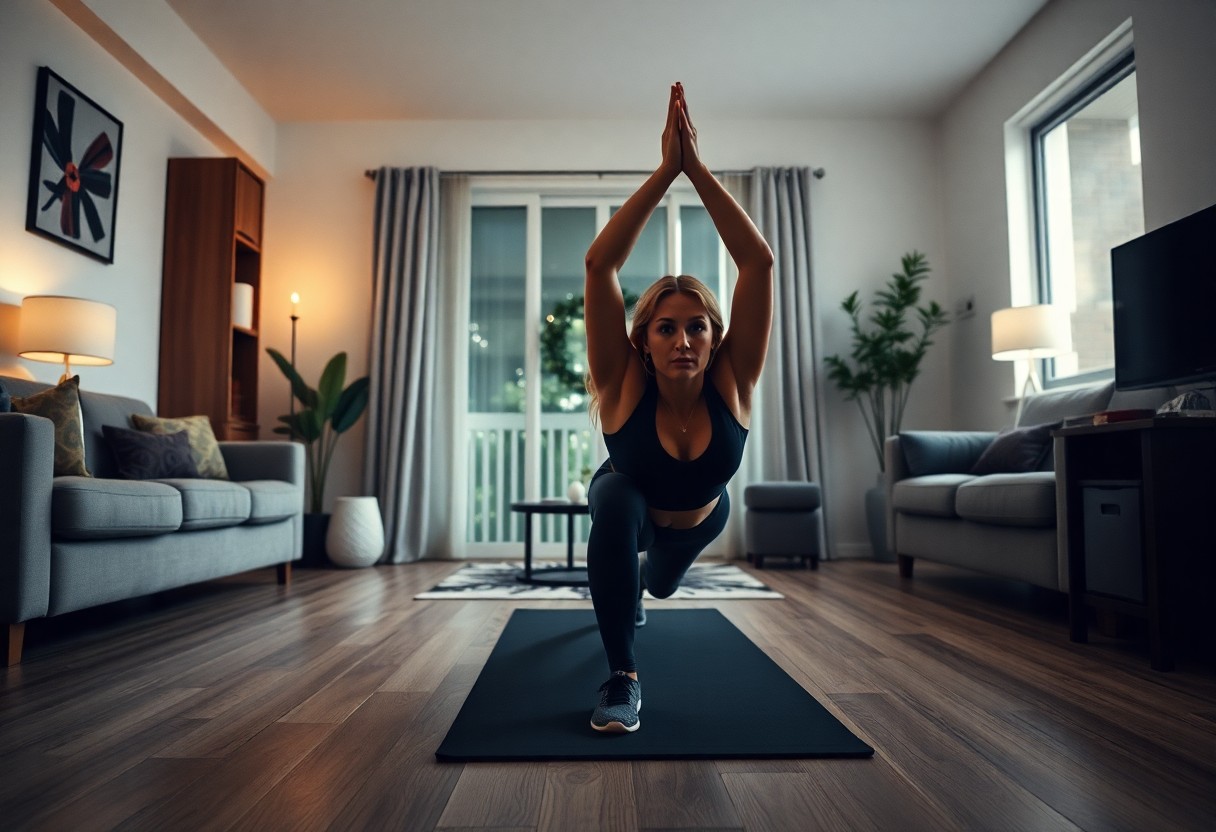
Key Takeaways:
- No-equipment exercises, such as push-ups and squats, are great for working out in small spaces.
- Bodyweight workouts can build strength and improve fitness without needing a gym.
- Consistency is key; aim to create a regular routine to see better results over time.
Benefits of No-Equipment Exercises
While many people think they need fancy gyms or expensive equipment to get fit, no-equipment exercises prove otherwise. These workouts are accessible for everyone, no matter where you are. They help you build strength, improve flexibility, and boost your overall health without the need for costly gear.
Convenience
Benefits of no-equipment exercises include the convenience of being able to work out anytime and anywhere. You don’t have to travel to a gym or schedule around its hours. This flexibility makes it easier for you to stay active even in small spaces, like your bedroom or living room.
Flexibility
The beauty of no-equipment exercises is that they fit into your schedule. You can choose to work out in short bursts throughout your day. Whether you have 10 minutes or an hour, you can adjust your routine to suit your needs.
And since these exercises don’t require any gear, you can switch things up whenever you want. If you feel like doing lunges one day and push-ups the next, you can easily make that change. This variety keeps your workouts exciting and helps prevent boredom, ensuring that you stay engaged and motivated.
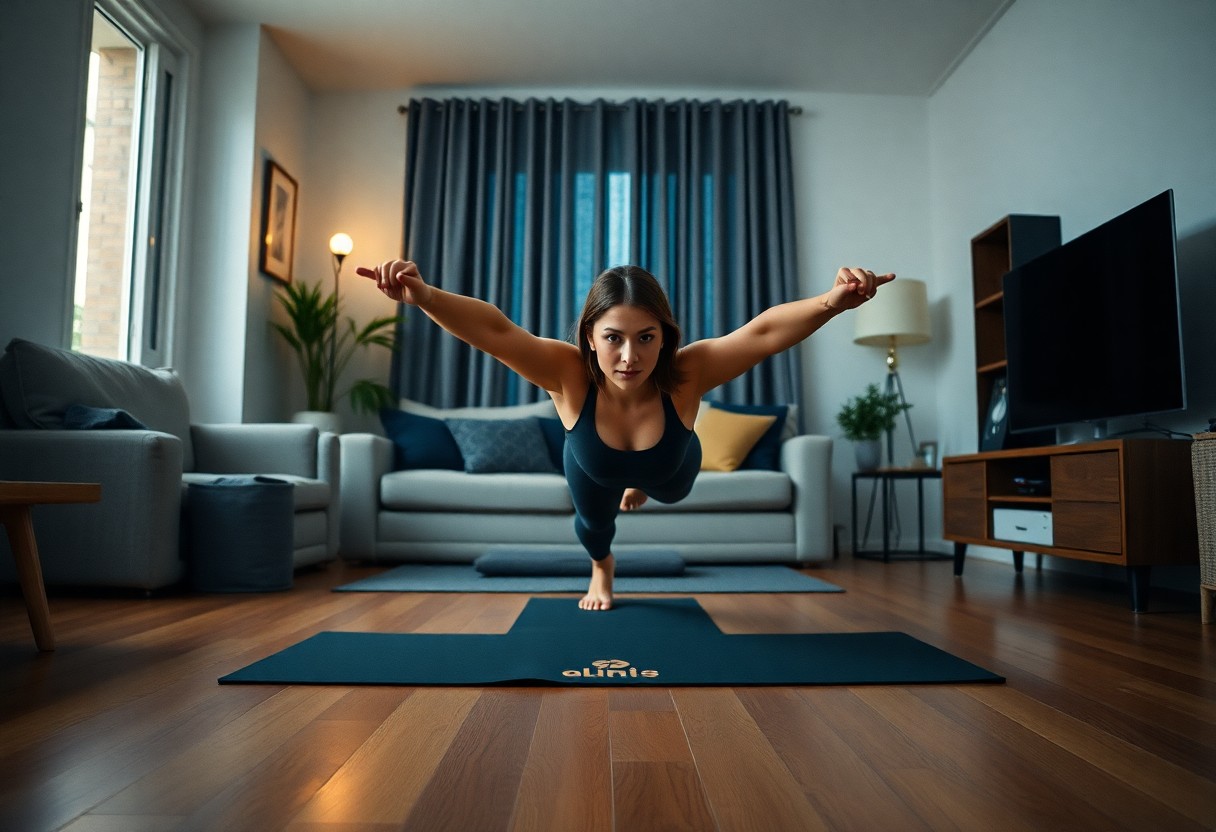
Types of No-Equipment Exercises
Some of the best no-equipment exercises can fit comfortably in small spaces. These exercises can help you improve strength and fitness without the need for bulky gear. Here’s a quick look at different types:
- Bodyweight Strength Training
- Cardiovascular Workouts
- Core Strength Exercises
- Flexibility and Stretching
- Balance and Stability Workouts
After choosing the right type of exercise, you can create a routine that suits your goals and space.
| Type of Exercise | Description |
|---|---|
| Bodyweight Strength Training | Exercises using your body weight to build muscle. |
| Cardiovascular Workouts | Activities that raise your heart rate and improve endurance. |
| Core Strength Exercises | Movements that target the muscles in your abdomen. |
| Flexibility and Stretching | Exercises to improve your range of motion. |
| Balance and Stability Workouts | Activities that enhance your coordination. |
Strength Training
By focusing on bodyweight exercises, you can effectively build strength in your muscles. Movements like push-ups, squats, and lunges engage multiple muscle groups at once. These exercises are easy to modify based on your fitness level. They can help you get stronger without weights, which is perfect when working in a small space.
Cardiovascular Workouts
Types of cardiovascular workouts can boost your heart health and stamina. They make your heart pump faster and improve your overall fitness. You can perform activities like jumping jacks, high knees, or burpees in tiny areas.
This approach to cardio can be truly effective. Even short bursts of these exercises can elevate your heart rate. Aim for at least 20 to 30 minutes of activity several times a week. You’ll notice improvements in energy and endurance over time.
Therefore, no-equipment exercises are accessible and can easily fit into your routine. Choose strength and cardio exercises to maximize your workout, even in small spaces.
The Best No-Equipment Exercises for Small Spaces
Now you can work out at home without fancy equipment. Small spaces are perfect for no-equipment exercises. You can easily fit in a workout in your living room, bedroom, or even a tiny apartment. These exercises will help you build strength, improve flexibility, and boost your overall fitness. Plus, they require minimal space and no special gear, making them accessible for everyone.
Bodyweight Exercises
On your journey to fitness, bodyweight exercises are incredibly effective. They use your body’s weight to build strength and endurance. You can do push-ups, squats, lunges, and planks right in your small space. These exercises target various muscle groups, helping you get a full-body workout without any equipment.
Dynamic Movements
Below, you’ll find that dynamic movements are a fun way to get your heart rate up. These exercises combine strength and cardio, making them perfect for tight spaces. Think of jumping jacks, high knees, and burpees. They don’t just build muscle; they also help improve your coordination and flexibility.
Further, dynamic movements engage multiple parts of your body at once. This boosts calorie burn and keeps your workout interesting. You can perform these movements quickly, even in a small area, and they require no equipment. By incorporating dynamic exercises into your routine, you can enjoy an effective and energetic workout that fits perfectly in your small space.
How to Create a No-Equipment Workout Routine
All you need to create an effective no-equipment workout routine is a bit of planning and determination. Start by choosing exercises that engage different muscle groups. This can include bodyweight squats, push-ups, and planks. It’s crucial to keep your routine simple and adaptable to your space and fitness level. Consistency will help you see improvements, so schedule your workouts and stick to them. With no equipment needed, you can work out anywhere, making it easy to fit into your busy life.
Structure Your Routine
Around three to five exercises can form the core of your routine. Select exercises that target major muscle groups, like legs, arms, and core. Aim for a balanced mix that challenges you but is still achievable. Consider performing each exercise for 30 seconds, followed by 10–15 seconds of rest. Repeat the circuit 2-3 times for a quick yet effective workout.
Set Realistic Goals
One vital aspect of creating a good workout routine is setting realistic goals. Your goals should fit your current fitness level while pushing you to improve over time. Instead of aiming to do 100 push-ups in a week, start with 10 and gradually increase. This way, you stay motivated and avoid getting discouraged.
NoEquipment workouts can be highly effective when you set goals that are attainable yet challenging. Break your larger goals into smaller steps to make them feel less overwhelming. For instance, if you want to work out four times a week, start with two sessions and build up. Tracking your progress, such as counting repetitions or duration, can also help you stay focused and motivated. This approach not only helps you achieve your fitness goals but also keeps your routine enjoyable.
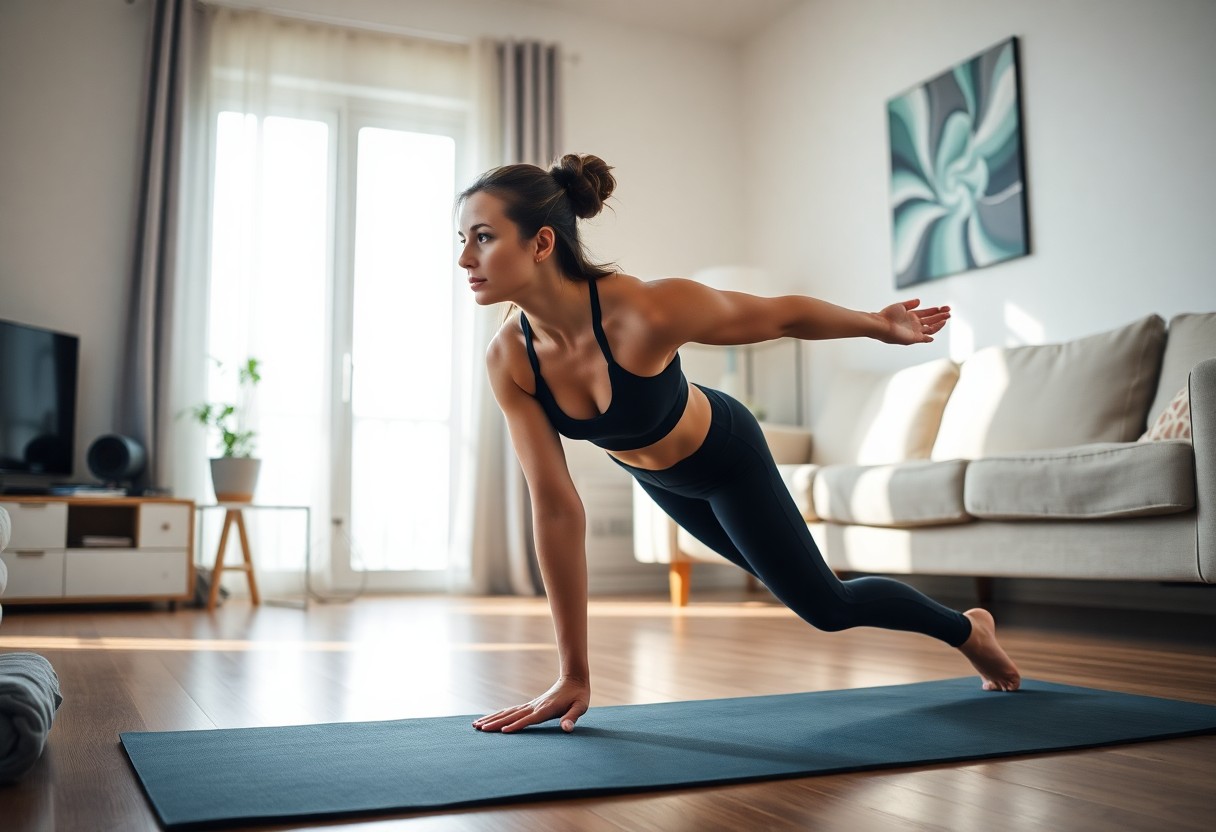
Safety Tips for Exercising in Small Spaces
To stay safe while exercising in small spaces, follow these tips:
- Warm up before starting your workout.
- Keep a water bottle nearby to stay hydrated.
- Avoid sharp objects or fragile items around you.
- Make sure the floor is clean and not slippery.
- Pay attention to your surroundings to avoid accidents.
After following these tips, your workout will be safer and more enjoyable. For more guidance, check out this article on Exercise in a small room? Needs to be very quiet and low ….
Clear the Area
On your workout day, take a moment to clear the area where you plan to exercise. Move any furniture or obstacles that could cause you to trip. Creating a safe space not only keeps you injury-free but also helps you focus on your workout. A clutter-free zone will make it easier to move and perform your exercises effectively.
Use Proper Form
With the right technique, you can maximize your exercise benefits and prevent injuries. Focus on maintaining proper posture and alignment during each movement. This attention to form ensures you are targeting the right muscles and getting the most from your workout.
Small errors in form can lead to bigger problems later on. Pay close attention to how your body feels during each exercise. If something doesn’t feel right, stop and adjust your position. You can always look for guidance online or ask someone with fitness knowledge for help. Maintaining proper form helps you build strength safely and effectively.
Conclusion
Presently, you have discovered some of the best no-equipment exercises that you can easily do in small spaces. These exercises not only fit well into tight areas, but they also help you stay active and fit without the need for a gym. By incorporating movements like bodyweight squats, push-ups, and planks into your routine, you can improve your strength and endurance. So go ahead and start these exercises today, and enjoy the benefits of staying healthy in the comfort of your own home.
FAQ
Q: What are no-equipment exercises?
A: No-equipment exercises are workouts you can do without any tools or machines. They use your body weight to build strength and improve fitness. Common examples include push-ups, squats, and lunges.
Q: Can I really get a good workout in a small space?
A: Yes! You can have an effective workout even in a tiny area, like a small room or an apartment. Many no-equipment exercises require very little space. Focus on movements that use your body, like jumping jacks, planks, and burpees.
Q: How do I start a no-equipment workout at home?
A: To start a no-equipment workout:
- Find a small, clear area to exercise.
- Choose a mix of exercises such as squats, push-ups, and mountain climbers.
- Decide how long you want to work out or how many rounds you’ll do.
- Warm up for 5–10 minutes before starting. This can include stretching or light cardio.
Q: How long should my workout last?
A: Your workout can last anywhere from 15 to 30 minutes. If you are new to exercising, start with shorter sessions and gradually increase the time as you get fitter. Intervals of high-intensity exercises followed by rest also help boost your workout efficiency.
Q: Are no-equipment exercises effective for weight loss?
A: Yes, no-equipment exercises can be very effective for weight loss. They can increase your heart rate and burn calories. Combining these exercises with a balanced diet will help you achieve your fitness goals more effectively.
